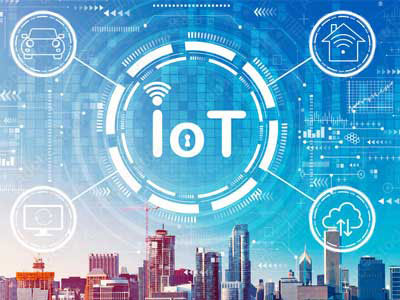What Are The Four Types Of IoT?
Key Takeaway
The Internet of Things (IoT) can be categorized into four main types: Consumer IoT, Commercial IoT, Industrial IoT (IIoT), and Infrastructure IoT. Consumer IoT includes devices like smart home gadgets, wearable technology, and personal health trackers, enhancing everyday convenience and personal well-being. Commercial IoT involves smart devices used in businesses, such as connected devices in retail and healthcare, improving operational efficiency and customer experiences.
Industrial IoT (IIoT) focuses on industrial applications like manufacturing, logistics, and energy management, utilizing sensors and automation to optimize processes and increase productivity. Infrastructure IoT supports urban infrastructure, including smart cities and transportation systems, using technologies like smart grids and traffic management systems to enhance public services and urban living. These categories showcase IoT’s diverse applications, from personal convenience to enhancing industrial processes and urban infrastructure.
Introduction to Four Types of IoT
The Internet of Things (IoT) encompasses a diverse range of applications across various sectors. Broadly, IoT can be categorized into four main types: Consumer IoT, Commercial IoT, Industrial IoT, and Infrastructure IoT. Each type serves distinct purposes, from enhancing everyday life to optimizing industrial processes and managing urban infrastructure. Understanding these categories helps in leveraging IoT’s full potential and implementing appropriate solutions for specific needs.

Consumer IoT: Devices and Applications
Consumer IoT enhances daily life by connecting various devices to the internet, making them smarter and more responsive. Smart home devices like thermostats, security cameras, and voice-activated assistants such as Alexa and Google Home are key examples. These devices collect and analyze data to provide personalized experiences, improve convenience, and boost safety.
Smart thermostats adjust temperatures based on user preferences for comfort and energy savings. Security cameras offer real-time surveillance and alerts for unusual activities. Voice-activated assistants simplify tasks, from setting reminders to controlling other smart devices with voice commands.
Wearable technology, such as fitness trackers and smartwatches, monitor health metrics like heart rate and sleep patterns, providing insights into personal health. These devices sync with smartphones to deliver comprehensive health reports and reminders, promoting healthier lifestyles.
For newly joined engineers, understanding Consumer IoT involves recognizing how these devices use data to enhance user experiences. Focus on seamless connectivity, robust data security, and user-friendly interfaces to meet consumer expectations. Innovating in Consumer IoT leads to more intuitive, efficient, and beneficial everyday technologies.
Commercial IoT: Business and Service Sector Uses
Commercial IoT enhances business operations and customer experiences. In retail, IoT sensors manage inventory in real-time, optimizing supply chains and reducing waste. This technology streamlines processes, lowers costs, and improves service.
In healthcare, IoT devices enable remote patient monitoring, reducing hospital visits and improving patient outcomes. Doctors can track health conditions from a distance, providing timely care.
Smart buildings use IoT for energy management and security. Automated systems control lighting and temperature based on occupancy, reducing energy consumption. IoT-enabled security systems monitor and respond to threats in real-time, ensuring safety.
Newly joined engineers should focus on scalable solutions, data security, and user-friendly interfaces to leverage Commercial IoT effectively.
Industrial IoT: Manufacturing and Industrial Applications
Industrial IoT (IIoT) is transforming manufacturing and industrial sectors through enhanced automation and data-driven decision-making. IIoT involves integrating sensors, machinery, and analytics to monitor and optimize industrial processes. For instance, in manufacturing, IoT-enabled equipment can predict maintenance needs, preventing costly downtime. This predictive maintenance ensures continuous operation and reduces unexpected failures.
In logistics, IIoT devices track goods in real-time, ensuring efficient supply chain management. This real-time tracking improves inventory management and reduces delays, ultimately enhancing customer satisfaction. Engineers working in IIoT focus on integrating advanced technologies like AI and machine learning to improve productivity, safety, and operational efficiency.
For newly joined engineers, understanding IIoT means recognizing its potential to revolutionize industrial operations. They should prioritize learning about sensor integration, data analytics, and system interoperability. By leveraging IIoT, industries can achieve higher efficiency, better resource management, and improved safety standards. This makes IIoT a critical component in the future of industrial operations, driving significant advancements and competitive advantages.
Infrastructure IoT: Urban and Civic Applications
Infrastructure IoT enhances urban systems, making cities smarter and more efficient. Key areas include traffic management, waste management, and public safety.
Traffic management uses IoT sensors to monitor patterns and optimize signal timings, reducing congestion. Smart waste management employs sensors to track bin levels, optimizing collection routes and reducing costs.
Public safety benefits from IoT through integrated surveillance and emergency response systems. Smart cameras detect unusual activities, alerting authorities promptly for faster response times.
For new engineers, understanding Infrastructure IoT is crucial for designing systems that create sustainable and efficient urban environments. This knowledge helps develop responsive cities that meet the needs of their residents.
Conclusion
Each type of IoT—Consumer, Commercial, Industrial, and Infrastructure—offers unique benefits and applications. Understanding these segments allows engineers and businesses to leverage IoT technologies effectively, addressing specific needs and driving innovation. By implementing the right IoT solutions, individuals and organizations can enhance efficiency, improve quality of life, and create smarter, more connected environments. As IoT continues to evolve, staying informed about its diverse applications will be key to unlocking its full potential.
